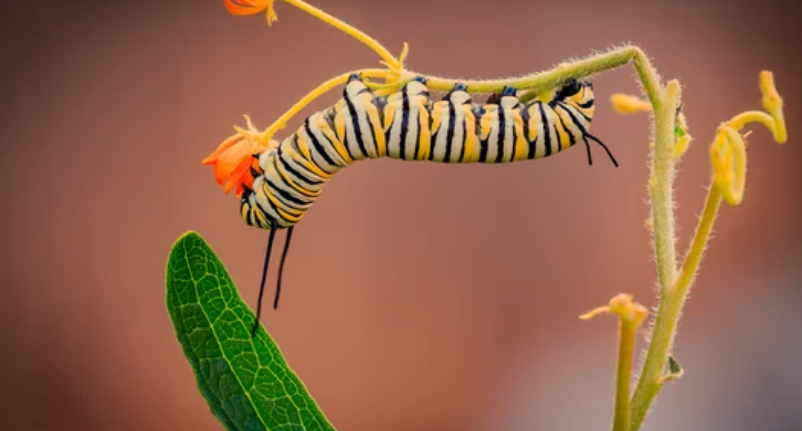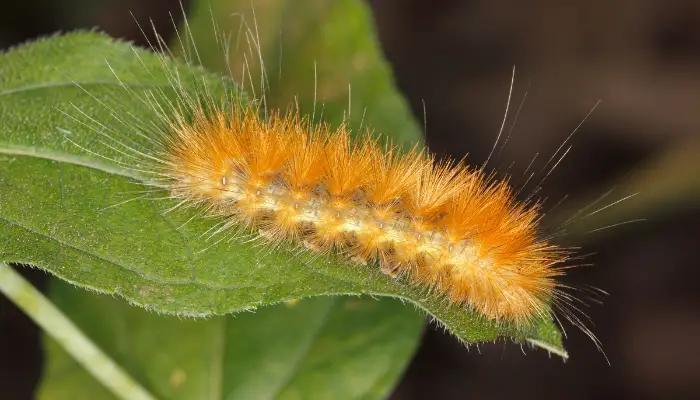Poisonous Caterpillar in Oklahoma: Identification and Treatment
Poisonous Caterpillar in Oklahoma.
Caterpillars are the larval stage of butterflies and moths.
They are fascinating creatures that transform into beautiful winged insects.
However, some caterpillars in Oklahoma can be poisonous and harmful to humans and animals.
There are several species of poisonous caterpillars in Oklahoma, such as the American dagger moth and the saddleback caterpillar.
These caterpillars have spines or hairs that can cause skin irritation, rashes, and even anaphylactic shock.
It is important to be aware of these caterpillars and to avoid touching or handling them.
If you come into contact with a poisonous caterpillar, it is important to seek medical attention immediately, especially if you experience severe symptoms such as difficulty breathing or swelling.
In this article, we will explore the different types of poisonous caterpillars found in Oklahoma and how to identify them.
We will also provide tips on how to avoid contact with these caterpillars and what to do if you are stung or bitten.
Overview of Poisonous Caterpillars in Oklahoma
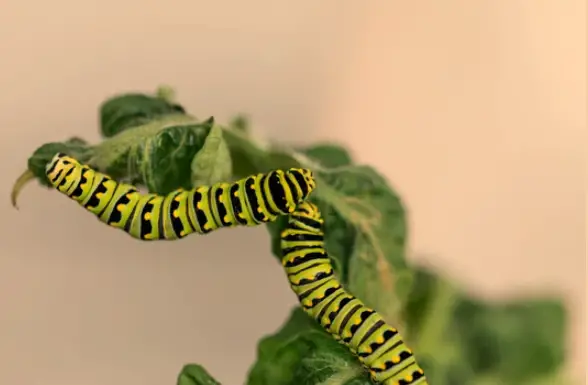
Oklahoma is home to a variety of caterpillars, some of which can be poisonous. These caterpillars are often brightly colored and have spines or hairs that can cause skin irritation, rashes, or even more serious health problems.
One of the most well-known poisonous caterpillars in Oklahoma is the Io moth caterpillar. This caterpillar has a bright green body with a long white and red stripe and tufts of spines. Its venom can cause severe pain, swelling, and even nausea in humans.
Another poisonous caterpillar found in Oklahoma is the saddleback caterpillar. This caterpillar has a distinct saddle-shaped marking on its back and is covered in spines that can cause a painful sting. The venom from this caterpillar can cause symptoms such as swelling, itching, and a burning sensation.
The stinging rose caterpillar is another poisonous caterpillar found in Oklahoma. This caterpillar has a bright yellow or orange body with a signature purple stripe running along the back. Its venom can cause a painful sting, swelling, and sometimes even difficulty breathing.
It is important to avoid touching or handling any caterpillar that you are not familiar with, especially those that are brightly colored or have spines or hairs. If you do come into contact with a poisonous caterpillar, it is recommended to wash the affected area with soap and water and seek medical attention if necessary.
Recognizing Poisonous Caterpillars

Caterpillars are a common sight in Oklahoma, but some of them can be poisonous and cause serious harm to humans and animals. It is important to know how to recognize these poisonous caterpillars to avoid contact with them. Here are some tips to help you identify them:
Color and Appearance
Poisonous caterpillars come in a variety of colors and appearances, but they often have bright colors or striking patterns that warn predators to stay away. Some poisonous caterpillars in Oklahoma have spines or hairs on their bodies that can cause skin irritation or a painful sting. Other caterpillars have venomous bristles, spines, or barbs that can lodge into the skin and cause a nasty reaction.
Common Types
Some of the most common poisonous caterpillars in Oklahoma include the saddleback caterpillar, the io moth caterpillar, and the puss caterpillar. The saddleback caterpillar has a distinctive green body with a brown saddle-shaped marking on its back. The io moth caterpillar has bright green or yellow stripes and venomous spines on its body. The puss caterpillar, also known as the asp caterpillar, has long, silky hairs that can cause a painful sting.
Habitat
Poisonous caterpillars can be found in a variety of habitats, including forests, gardens, and parks. They often feed on plants and trees, so it is important to be cautious when handling plants or walking through wooded areas.
In conclusion, poisonous caterpillars are a potential danger in Oklahoma, but by knowing how to recognize them, you can avoid contact and prevent any harm. If you do come into contact with a poisonous caterpillar, seek medical attention immediately.
Common Species of Poisonous Caterpillars
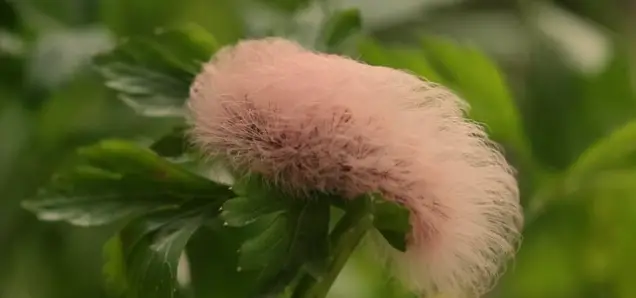
There are several species of poisonous caterpillars that can be found in Oklahoma. These caterpillars can cause severe reactions when they come into contact with human skin. It is important to be able to identify these caterpillars to avoid accidental contact.
Puss Caterpillar
Also known as the southern flannel caterpillar, the puss caterpillar is one of the most dangerous caterpillars in Oklahoma. It has a furry appearance and can be found on oak, elm, and sycamore trees. The hairs on its body contain venom that can cause intense pain, swelling, and nausea. If you come into contact with a puss caterpillar, seek medical attention immediately.
Hickory Tussock Caterpillar
The hickory tussock caterpillar is another poisonous caterpillar that can be found in Oklahoma. It has a distinctive appearance with white and black spines on its body. The spines contain venom that can cause skin irritation, rash, and swelling. If you come into contact with a hickory tussock caterpillar, wash the affected area with soap and water and apply a cold compress.
Spiny Oak-Slug Caterpillar
The spiny oak-slug caterpillar is a small, green caterpillar with spines all over its body. It can be found on oak, hickory, and other trees in Oklahoma. The spines on its body contain venom that can cause skin irritation, rash, and swelling. If you come into contact with a spiny oak-slug caterpillar, wash the affected area with soap and water and apply a cold compress.
Saddleback Caterpillar
The saddleback caterpillar is a small, green caterpillar with a brown saddle-shaped marking on its back. It can be found on a variety of plants in Oklahoma. The spines on its body contain venom that can cause skin irritation, rash, and swelling. If you come into contact with a saddleback caterpillar, wash the affected area with soap and water and apply a cold compress.
It is important to note that not all caterpillars in Oklahoma are poisonous. However, it is always best to err on the side of caution and avoid contact with any caterpillar that you are not familiar with. If you do come into contact with a poisonous caterpillar, seek medical attention immediately.
Effects of Stings
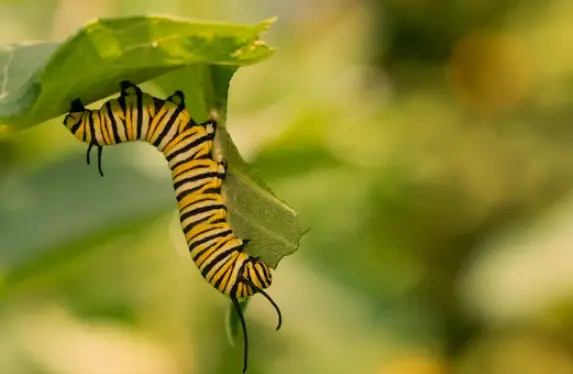
Poisonous caterpillars found in Oklahoma can cause a range of symptoms, from mild irritation to serious health problems. The severity of the reaction depends on the type of caterpillar, the amount of venom injected, and the individual’s sensitivity to the venom.
One of the most common symptoms of a caterpillar sting is intense pain at the site of the sting. The pain may be accompanied by swelling, redness, and itching. In some cases, the sting can cause a rash or hives to develop on the skin.
Some species of caterpillars found in Oklahoma can cause more serious symptoms, such as nausea, vomiting, and difficulty breathing. These symptoms are typically seen in individuals who are allergic to the venom of the caterpillar.
It is important to seek medical attention if you experience any of these symptoms after being stung by a caterpillar. In some cases, antihistamines or other medications may be necessary to reduce the severity of the symptoms.
To prevent caterpillar stings, it is recommended to wear protective clothing when spending time outdoors, especially in areas where caterpillars are known to be present. If you come into contact with a caterpillar, avoid touching it with bare skin and instead use a stick or other object to move it out of the way.
Overall, while the effects of caterpillar stings can range from mild irritation to serious health problems, taking precautions and seeking medical attention when necessary can help minimize the risk of complications.
Treatment for Caterpillar Stings
If someone gets stung by a caterpillar, there are several steps they can take to treat the sting and reduce the symptoms. Here are some things to keep in mind:
- Do not touch the affected area. The spines of the caterpillar can break off and remain in the skin, causing further irritation. Use a piece of tape or a credit card to gently remove any spines that are visible on the skin.
- Wash the area with soap and water. This will help remove any remaining spines and reduce the risk of infection.
- Apply a cold compress. This can help reduce swelling and ease pain. A bag of ice or a cold pack wrapped in a towel can be applied to the affected area for 10 to 15 minutes at a time.
- Take an over-the-counter pain reliever. Acetaminophen or ibuprofen can help reduce pain and inflammation.
- Apply a topical cream. Calamine lotion or hydrocortisone cream can help reduce itching and irritation.
If the symptoms are severe or do not improve with these treatments, seek medical attention. In rare cases, caterpillar stings can cause a severe allergic reaction or lead to more serious health problems.
It is important to note that not all caterpillar stings require medical attention. However, it is always better to err on the side of caution and seek medical help if there is any doubt or concern.
Prevention and Control Methods
To prevent and control poisonous caterpillars in Oklahoma, there are several methods that can be used. Here are some of the most effective ones:
1. Identify and Remove Host Plants
One of the best ways to prevent caterpillar infestations is to identify and remove host plants. For example, if you have an oak tree that is infested with caterpillars, removing the tree or treating it with insecticides may be necessary to prevent the spread of the infestation.
2. Use Insecticides
Insecticides can be used to control caterpillars, but it is important to choose the right product and use it correctly. Some insecticides are toxic to beneficial insects like bees and butterflies, so it is important to read the label carefully and follow the instructions.
3. Physical Control
Physical control methods, such as handpicking or vacuuming caterpillars, can be effective in small infestations. This method is time-consuming but can be very effective in preventing the spread of the infestation.
4. Biological Control
Biological control methods involve using natural predators or parasites to control caterpillars. For example, parasitic wasps can be used to control caterpillars by laying their eggs on the caterpillars, which then hatch and feed on the caterpillar.
5. Cultural Control
Cultural control methods involve modifying the environment to prevent caterpillar infestations. For example, removing leaf litter or mulch can reduce the habitat for caterpillars, making it less likely that they will infest an area.
By using a combination of these methods, it is possible to prevent and control poisonous caterpillars in Oklahoma.
Involvement of Local Authorities
Local authorities in Oklahoma are aware of the potential danger of poisonous caterpillars and have taken measures to educate the public about them. Oklahoma State University’s Cooperative Extension Service has published an article on their website warning about the dangers of caterpillars in the state, including the seven known poisonous species found in Oklahoma 1.
In addition, the Oklahoma Poison Control Center (OPCC) provides resources and information on their website regarding the identification and treatment of caterpillar stings 2. They advise individuals who have been stung by a caterpillar to seek medical attention immediately if they experience severe symptoms such as difficulty breathing, chest pain, or swelling of the face, lips, tongue, or throat.
The Oklahoma Department of Agriculture, Food, and Forestry has also issued warnings about the dangers of certain caterpillars in the state, including the Puss Caterpillar, which is considered one of the most venomous caterpillars in the United States 3. They advise individuals to avoid touching or handling caterpillars and to seek medical attention if they are stung.
Overall, local authorities in Oklahoma are taking the potential danger of poisonous caterpillars seriously and are working to educate the public and provide resources for identification and treatment. It is important for individuals to be aware of the potential danger and to take precautions to avoid contact with these dangerous insects.
Conclusion
In Oklahoma, there are several species of caterpillars that are poisonous and can cause harm to humans. These caterpillars have developed unique predator defenses, such as poisonous substances, venomous hairs, and spiny protrusions, to protect themselves from predators.
It is important to be aware of these poisonous caterpillars and to take precautions when encountering them. If you come into contact with a poisonous caterpillar, it is recommended to wash the affected area with soap and water, apply a cold compress, and seek medical attention if symptoms persist or worsen.
To prevent encountering poisonous caterpillars, it is important to be aware of their preferred habitats and host plants. For example, the IO moth caterpillar is commonly found on oak and pecan trees, while the saddleback caterpillar is often found on fruit trees and shrubs.
In addition, it is important to wear protective clothing, such as gloves and long sleeves, when working outdoors in areas where these caterpillars are known to inhabit. By taking these precautions, individuals can reduce the risk of encountering and being harmed by poisonous caterpillars in Oklahoma.
Frequently Asked Questions
What are some common caterpillars found in Oklahoma?
Oklahoma is home to a variety of caterpillars, including the Variegated Fritillary, Indigo caterpillars, hairy caterpillars, milkweed caterpillars, and armyworms. Some of these caterpillars are poisonous and can cause harm to humans and animals.
How can you identify a poisonous caterpillar in Oklahoma?
Poisonous caterpillars in Oklahoma can be identified by their unique predator defenses. They may have bright colors, spines, or hairs. The American Dagger Moth caterpillar, for example, is bright yellow-green with black bristles that resemble eyebrows. It’s important to avoid touching any caterpillar that you are not familiar with, especially if it looks unusual or has spines or hairs.
What are the symptoms of a caterpillar sting?
Symptoms of a caterpillar sting can vary depending on the species of caterpillar. Some common symptoms include redness, swelling, itching, and pain at the site of the sting. More severe symptoms may include difficulty breathing, nausea, and vomiting. If you experience any of these symptoms after being stung by a caterpillar, seek medical attention immediately.
What is the difference between a green and a brown caterpillar in Oklahoma?
The color of a caterpillar in Oklahoma can vary depending on the species. Some caterpillars, like the Variegated Fritillary, have a green and brown coloration. Others, like the American Dagger Moth caterpillar, are bright yellow-green with black bristles. It’s important to remember that the color of a caterpillar does not necessarily indicate whether or not it is poisonous.
Are white fuzzy caterpillars poisonous in Oklahoma?
White fuzzy caterpillars in Oklahoma are not necessarily poisonous, but it’s important to avoid touching any caterpillar that you are not familiar with. Some caterpillars, like the Puss caterpillar, are covered in soft, white hairs that can cause a painful sting.
What should you do if you are stung by a caterpillar in Oklahoma?
If you are stung by a caterpillar in Oklahoma, wash the affected area with soap and water and apply a cold compress to reduce swelling. Over-the-counter pain relievers and antihistamines may also help alleviate symptoms. If symptoms persist or become severe, seek medical attention immediately.

